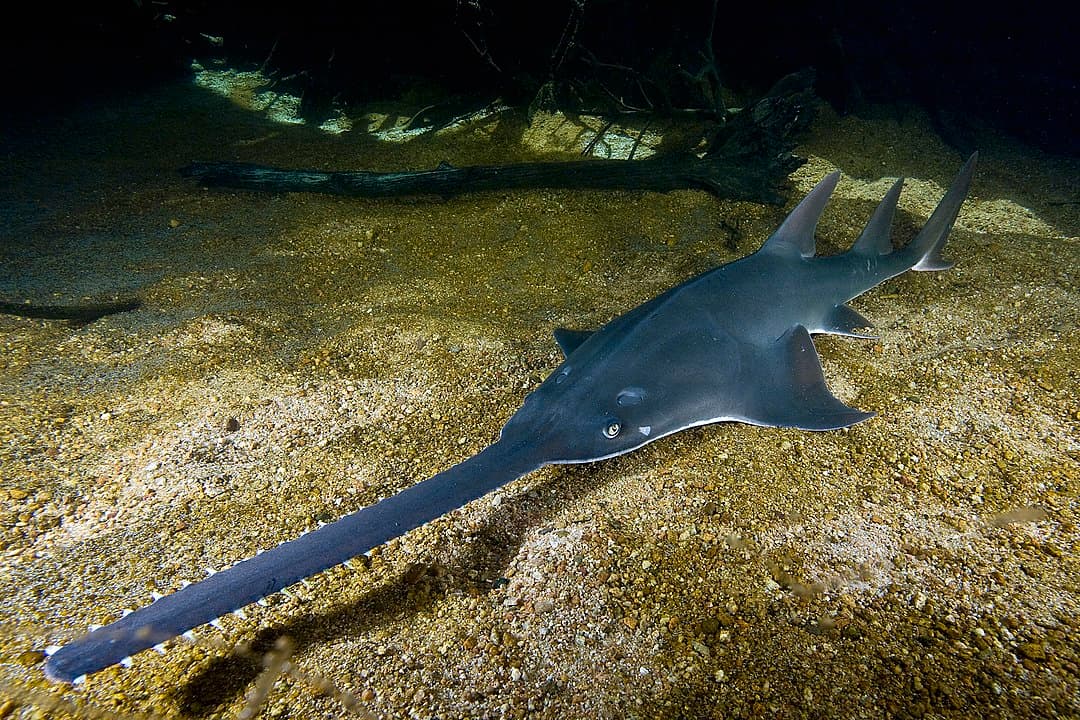Largetooth sawfish (ត្រីថ្ក) is among the 4 out of 5 sawfish species in Southeast Asia. Not many people in Cambodia know about this fish species as they are not very common. One of the reasons is that their population is very small, living only in the Mekong system. Not to mention the threats such as habitat degradation, habitat loss, and unmanaged and unregulated fisheries, they are not doing well. We are going to explore a bit more about it today, I sure hope you learn a few new things from this article.
Appearance

The largetooth sawfish is gray to yellowish-brown in color on the upper parts with a clear yellow tinge to the fins. However, the freshwater ones may have a reddish color due to blood suffusion below the skin but both specimens have grayish or white underside. A largetooth sawfish can reach the length of up to 7.5 meters long but the common ones are usually smaller. So an average largetooth sawfish is only around 2 to 2.5 meters, and its appearance is very easy to recognize.
A sawfish in general has a long rostrum aka saw that many people here usually call mouth or nose. On average, this unusual snout is around 27% of the total length of the fish but usually longer. There are 14 to 22 large teeth on each side of the rostrum but they are not for chewing. The fish use the saw to stir up the bottom to find prey or to slash groups of fish. It can stunt schooling fish by just swinging its snout side to side. And, of course, to defend themselves.
Behavior
Largetooth sawfish are also solitary so it is uncommon to see them in groups in their natural habitats. Sawfish are docile and harmless to humans since they don’t attack us as we are too big to be their prey. However, things are different when they are approached, captured, or handled in a threatening manner. The saw comes with flaws because it makes it easy for them them to be caught in demersal tangle net and trawl fisheries. It is normal for fish to wiggle around but a fish with long and dangerously sharp teeth is a whole new level. During captivity or entanglement, a sawfish can wiggle around and inflict serious injuries to defend themselves.
Feeding & Habitats
If we talk about worldwide, their distribution is in tropical and subtropical coast regions and freshwater regions. Their common habitats are in areas of the Mekong including Great Lake and Tonlé Sap, and sightings of them are rare. Usually, adults live in muddy or sandy bottoms of shallow coastal waters or estuaries. Along with that, their euryhaline ability allows them to live in freshwater like lakes and rivers just fine. Across their range, they feed on crustaceans, fish, and mollusks that they can find. Unfortunately, largetooth sawfish is now classified as Critically Endangered on the IUCN Red List. Overfishing for their fins to use in shark soup is the main threat but habitat loss also plays a big part. Some also sell their saws as tourist souvenirs.
Related Post: Tonguesole Fish Species In Cambodia
